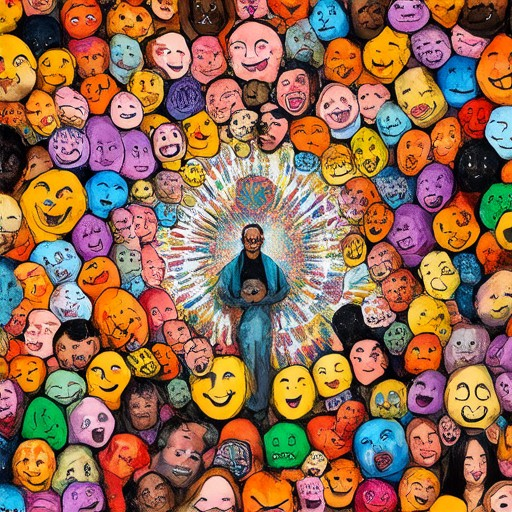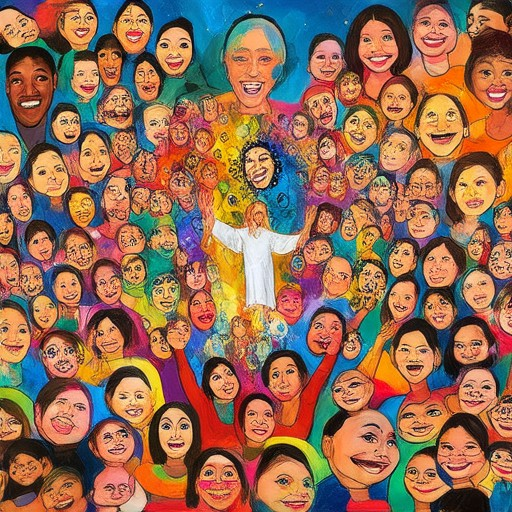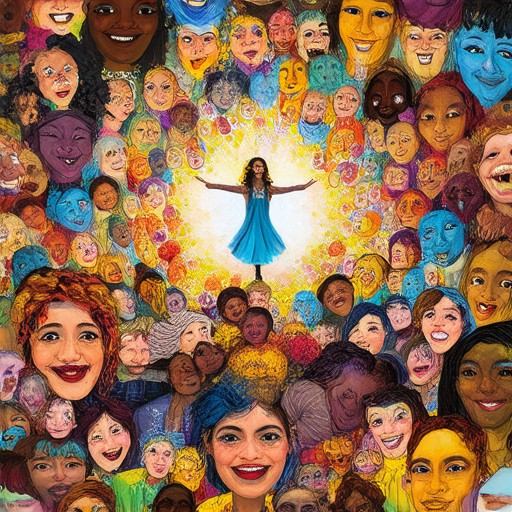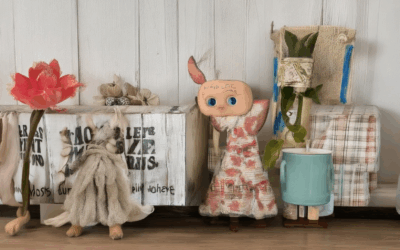Stories are powerful tools that connect us emotionally, and nowhere is this connection more evident than through the simple yet profound act of a smile. Whether it’s the warmth of a character’s grin, the twinkle in someone’s eye, or the flash of a knowing smile, a smile has the unique ability to light up a narrative and leave a lasting impression. From heartwarming tales that bring tears to your eyes to lighthearted moments that bring a chuckle, smiles play a pivotal role in shaping the emotional landscape of stories. In this article, we’ll delve into the fascinating world of smiles in storytelling, exploring how they add depth, evoke empathy, and create unforgettable characters. We’ll examine iconic smiles from literature and media, uncover the cultural significance of proverbs involving smiles, and even dive into the art of crafting a perfectly timed smile moment. Along the way, we’ll discover how smiles transcend boundaries, bringing joy to readers of all ages and backgrounds. So, let’s unlock the power of smiles in stories and explore the endless ways they enrich our literary world.

Describing a Smile in a Story
A smile is a powerful tool in storytelling, capable of conveying a wide range of emotions and character traits. Here’s how you can effectively describe a smile in your narrative:
- Happiness and Joy: A smile can light up a room, especially when describing a character who is genuinely happy. For example, “Her smile was radiant, illuminating the dark room with warmth.”
- Friendliness and Approachability: A friendly smile can make a character seem more relatable. You might write, “He had a smile that made everyone feel welcome, like a warm invitation.”
- Nervousness or Shyness: A small, hesitant smile can show someone is uncomfortable or unsure. An example might be, “She smiled nervously, her eyes darting away, revealing her anxiety.”
- Sadness or Hope: In a sad moment, a smile can indicate resilience or hope. You might describe it as, “Despite the tears, his smile lingered, a flicker of optimism.”
- Personality Reflection: A smile can also reveal a character’s nature. For instance, “His constant smirk hinted at a mischievous personality, always ready with a joke.”
By paying attention to these elements, you can craft vivid descriptions that bring your story’s emotional landscape to life.
What is the most famous smile?
The concept of a “famous smile” can be interpreted in various ways, depending on the context. However, one smile that stands out universally is the smile itself—a natural expression of joy, friendliness, and warmth. This smile has been depicted in art, literature, and popular culture for centuries, symbolizing human connection and emotional resonance.
1. The Enigmatic Mona Lisa Smile
Leonardo da Vinci’s masterpiece, the Mona Lisa , features a serene and enigmatic smile that has captivated audiences for over five centuries. This smile is often associated with intelligence, curiosity, and calmness, embodying the Renaissance ideal of harmony between humanity and nature.
2. The Timeless Laugh of Charlie Chaplin
Charlie Chaplin’s Tramp character is famously known for his iconic, toothy grin. This smile became a symbol of hope and resilience during the Great Depression, offering comfort and inspiration to millions.
3. The Confident Smirk of Marilyn Monroe
Marilyn Monroe’s smile is often cited as one of the most recognizable and confident smiles in Hollywood history. Her radiant grin became synonymous with beauty, talent, and the American dream.
4. The Thoughtful Smile of Albert Einstein
Einstein’s thoughtful, slightly crooked smile became an instantly recognizable feature of his persona. It conveyed his intellectual curiosity and the complexity of his personality.
5. The Warmth of Mother Teresa’s Smile
Mother Teresa’s smile was noted for its warmth and compassion, reflecting her dedication to helping the poor and downtrodden. It became a symbol of universal love and kindness.
6. The Beloved Smiles of Princess Diana
Princess Diana’s smiles were adored by the public, showcasing her genuine kindness and relatability. Her warm, inviting grin became a defining feature of her public image.
7. The Iconic Smiles of Historical Figures
From ancient sculptures to modern photographs, the smiles of historical figures continue to captivate us. These smiles often reflect the values and aspirations of their eras, serving as windows to the past.
In conclusion, the “most famous smile” depends on the context and perspective. Whether it’s the Mona Lisa’s enigmatic grin, Charlie Chaplin’s hopeful Tramp smile, or Princess Diana’s warm expression, these smiles have left an indelible mark on our collective consciousness. They remind us of the power of human emotion and the enduring appeal of authentic expressions.

The Power of a Smile
A smile is often considered one of the most powerful expressions in human communication. It has the ability to instantly brighten someone’s day, convey emotions, and foster connections. Here are some thought-provoking quotes about the impact of a smile:
- “A smile costs nothing, yet it is worth more than gold.” – African Proverb
- “Your smile is an invitation to happiness.” – Unknown
- “Smiling is the greatest beauty a woman can have.” – Jeanne Moreau
- “A smile is the best way to let someone know you’re happy to see them.” – Unknown
Quotes About Smiling
-
“Smiles Bring Joy”
A smile has the power to transform a simple interaction into a meaningful moment. It communicates empathy, understanding, and kindness. Whether you’re meeting someone for the first time or reconnecting with an old friend, a genuine smile can leave a lasting impression. -
“The Art of Smiling”
Smiling is an art form that everyone can master. It doesn’t require perfect teeth or a particular pose. It’s about feeling confident enough to show the world the light within you. A smile can light up a room and bring joy to others. -
“Smiling Changes Everything”
Research shows that smiling can reduce stress, boost mood, and even improve physical health. It’s a natural way to express happiness and can help you feel more positive, even when you’re feeling down.
These quotes highlight the profound impact of a smile and why it remains one of the most universally appreciated forms of expression. Whether you’re sharing it with a stranger or loved one, a smile truly has the power to brighten lives.
For more uplifting quotes and stories that celebrate life’s little moments, visit our lifestyle blog at Orange Donkey .

What is Smile?
A smile is a facial expression characterized by the upward turning of the corners of the mouth. It typically signifies happiness, joy, friendliness, or amusement. Smiling can make individuals appear more approachable and increase feelings of trustworthiness.
Examples of Smiles
- Genuine Smile: Turning up the corners of the mouth spontaneously, often in response to something positive or emotional.
- Social Smile: A smile used in polite or professional settings, such as during a job interview or at a networking event.
- Dainty Smile: A subtle, almost imperceptible smile, often used when someone is shy or reserved.
- Playful Grin: A wider, more exaggerated smile, usually accompanied by laughter or mischief.
- Reassuring Smile: A warm, comforting smile used to convey empathy or offer support in stressful situations.
What is a Flirty Smile?
A flirty smile is a type of facial expression that communicates interest, playfulness, or romantic attraction. It typically involves a warm, inviting smile with subtle cues that go beyond a standard grin. Here’s a breakdown of the key elements:
-
Timing and Duration: A flirty smile often occurs at the right moment in a conversation, such as when someone is recounting a story or making a joke. It may linger slightly longer than a typical smile, signaling engagement.
-
Eye Contact and Sparkle: The eyes often play a significant role. A flirty smile might be accompanied by a flicker in the eyes, a sign of genuine interest and connection.
-
Confidence and Comfort: A confident individual might exhibit a flirty smile more naturally. It often reflects comfort in the situation and a desire to connect with the other person.
-
Context and Environment: The setting can influence how a smile is perceived. For instance, a flirty smile might be more noticeable in a social gathering or bar setting compared to a quiet coffee shop.
-
Cultural Differences: Cultural norms play a role in interpreting a flirty smile. In Western media, a confident smile with a slight tilt of the head is often portrayed as flirty, though interpretations can vary widely across different cultures.
-
Non-Verbal Cues: Beyond the smile itself, factors like body language, posture, and eye contact can complement a flirty smile, reinforcing its intended effect.
Understanding these elements can help recognize and interpret a flirty smile, making it easier to gauge someone’s interest or intentions in a social interaction.

What is one sentence of smiling?
A smile is a warm gesture that radiates joy, lighting up a room and bringing happiness to everyone around.
Conclusively, a smile is a powerful expression of positivity that fosters connection and uplifts spirits, making it a universally recognized symbol of kindness and well-being.




0 Comments